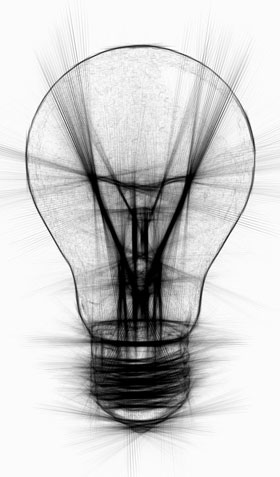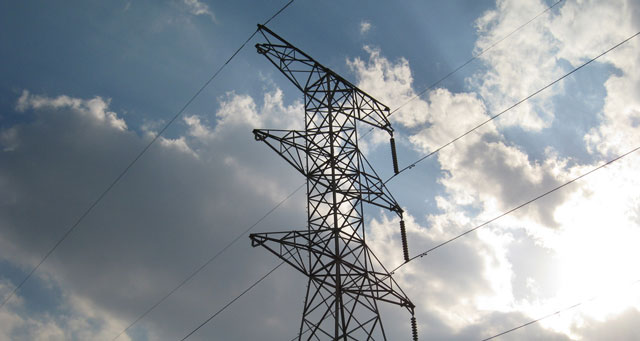 It was 74 minutes of absolute chaos. Between 5.31pm and 6.45pm on Saturday night, Eskom lurched from stage one load shedding to stage two to stage three and then back to stage two.
It was 74 minutes of absolute chaos. Between 5.31pm and 6.45pm on Saturday night, Eskom lurched from stage one load shedding to stage two to stage three and then back to stage two.
Stages are an abstraction, and it’s worth quantifying what that actually means. Earlier in the afternoon, we were alerted to the fact that stage one load shedding would start at 5pm. Stage two equals a supply shortfall of 1GW. Stage two equals a 2GW shortfall, while stage three is a 3GW shortfall.
Now, 1GW (or even close to 1GW) is a pretty big number. For the sake of comparison, it’s practically the equivalent of a full unit at Koeberg, or around two units at one of Eskom’s many coal-fired base load power stations.
Earlier on Saturday afternoon, Eskom spokesman Khulu Phasiwe told EWN: “The primary reason is that unit 3 of Tutuka Power Station, which produces just over 600MW, is now offline because of technical faults.”
You’ve got to look at this through supply and demand lenses. Very simply, demand — especially on a Saturday night — is unlikely to have spiked beyond Eskom’s estimates.
This was almost certainly a supply-side problem.
To go from an expected 1GW shortfall to a 3GW one means somewhere between 1GW and 2GW of generation capacity was lost in an hour. This is very abnormal. And then close to 1GW of capacity was recovered within 30 minutes (between 6.15pm and 6.45pm).
The problem with such rapid changes in load shedding status is that the metros (especially) cannot react quickly enough. The chaos on Johannesburg City Power’s Twitter account on Saturday night was there for all to see. From what was communicated there, it shifted to stage three at 6.25pm and never shifted back to stage two? This, after crowing just two hours prior that there would not be any load shedding at all!
There’s surely only one thing worse than knowing jut how bad things are at Eskom, as it battles to maintain generating capacity, and that’s not knowing at all.
This is the situation we find ourselves in.
 Previously, the utility published system status bulletins twice a week (on Mondays and Thursdays). These documents provided demand forecasts for the following six days, plus crucial actual peak demand and capacity data for the preceding days. It also provided a breakdown of planned maintenance and unplanned outages for the day of publication.
Previously, the utility published system status bulletins twice a week (on Mondays and Thursdays). These documents provided demand forecasts for the following six days, plus crucial actual peak demand and capacity data for the preceding days. It also provided a breakdown of planned maintenance and unplanned outages for the day of publication.
But, late last month, Eskom made it clear that “the bi-weekly system status bulletin has been discontinued. Status bulletin number 346 issued on 21 May 2015 was the last one. In order to ensure that we keep the media and our stakeholders informed of the status of the power system, we have been issuing general power alerts on a regular basis.”
This was a month after Brian Molefe’s secondment to the utility as acting CEO. It’s interesting that such a radical change (still not noticed by the media) was made, particularly with load shedding occurring on 56 out of the 151 days to end May this year. Remember, these status bulletins have been published since Brian Dames made the call in January 2012.
Perversely, Eskom claims it’s communicating more often than it was previously. Except there’s no data at all. We simply do not know how much generating capacity the utility has on any given day in any given week. Nor do we know what demand is, or how that demand is being met.
A black box.
Instead, we’re told in e-mail alerts that very often arrive well after load shedding is implemented: “This is due to a further shortage of generating capacity and increased electricity demand. Any unexpected changes on the vulnerable and constrained power system could lead to a change in the load shedding stage at short notice.”
In fact, its 181-word power alert for the change to stage three on Saturday night contains no more information than its 137-character tweet. Eskom’s four tweets from its media desk account told us just as much as its six power alert e-mails on Saturday totaling nearly a thousand words.
In its state of the system briefing last week, Eskom produced this gem: “The recent load shedding from Monday, 8 June 2015 to Friday, 12 June 2015 was the result of an increase in demand and an increase in unplanned breakdowns.”
Thankfully, there is one way of figuring out what the status of Eskom’s generation capacity is. Electricity demand has hardly increased meaningfully since last year (that’s a story for another day). So, using Eskom’s status bulletins from 2014, we know that on Saturday, 21 June 2014, peak demand was 33,2GW. But it’s winter, and some weekends will be colder than others. On Saturday, 28 June 2014, peak demand was 31,5GW, while on Saturday, 14 June 2014 (a long weekend), it was just shy of 32GW.

So, we’re likely looking at peak demand this past Saturday of somewhere between 31,5GW and 33GW. Subtract the 1GW to 3GW of unfulfilled demand (load shedding), and Eskom’s capacity on Saturday night (when it lurched to stage three for 30 minutes) was somewhere between 28,5GW and 30GW, likely at the lower end of that range. The fact that load shedding reverted to stage two means a more “normalised” capacity figure would be somewhere between 29,5GW and 31GW.
So, roughly 12,5GW (best case) to 14GW (worst case) was unavailable.
Eskom’s installed capacity (including Cahora Bassa) is 43,5GW. That means somewhere between 29% and 32% of its generating capacity was offline.
This is consistent with expert Chris Yelland’s calculations.
Also, during its state of the system briefing last week, the utility said: “On average, Eskom has a maintenance budget of [7GW] in winter, which is dependent on demand requirements.”
Aside from the awful lot of hedging in that sentence, any bets as to whether this is being achieved?
- Hilton Tarrant works at immedia, specialists in native mobile app and Web development
- This article was first published on Moneyweb and is republished here with permission

